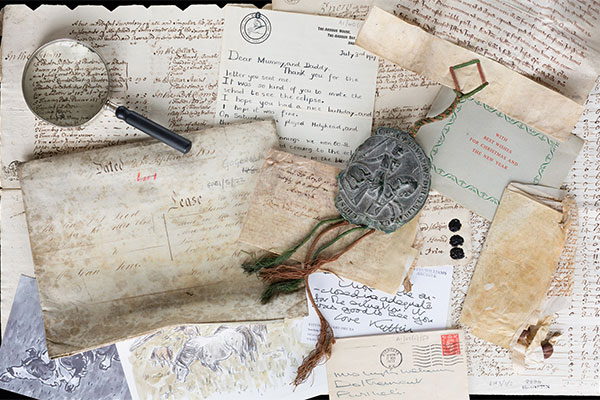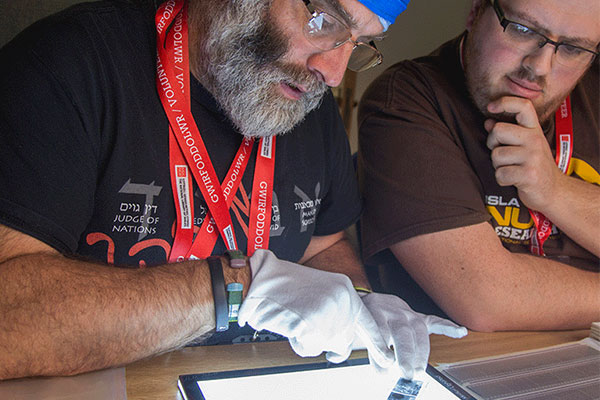During National Eisteddfod week I had the privilege of giving a talk at the Science and Technology Village on the scientific treasures to be found amongst the Library’s collections. That talk presented 27 scientific treasures dating from the 11th through to the 20th century offering a taste of the type of science-related material held by the Library. This blog will introduce you to four of these items, focusing on some key science-related printed works from the Library’s print collections.
We begin with one of the most significant books in the development of scientific thought, Galileo’s Dialogo di Galileo Galilei…: sopra i due massimi sistemi del mondo Tolemaico, e Copernaico (1632). Making a critical case for the Copernican theory that the earth revolved around the sun, Galileo’s work takes the form of a dialogue between two philosophers, Saliviati, representing Galileo’s views and the Copernican hypothesis, and Simplicio, representing the Ptolemaic view backed by the Catholic Church, and a neutral layman, Sagredo. The publication of this book led to Galileo’s trial for heresy, his house arrest for the rest of his life, and the book being placed on the Index of Prohibited Books from 1633 until 1835. The Library’s copy is the first edition published in Florence in 1632.
The next two works bring us to Wales and are representative of Welsh-language works on science in the nineteenth and twentieth century. The first, Edward Mills’ Y Darluniadur Anianyddol (1850), is one of a number of popular science books published during the mid-19th century. Mills (1802-1865) travelled across Wales lecturing on astronomy and built a 66 foot orrery, described as one of the ‘wonders of the age’. Mills and his son were responsible for the woodcuts in the Darluniadur.
The second, is Y Gwyddonydd, the pioneering Welsh-language scientific journal published by the University of Wales Press between 1963 and 1996. The journal featured academic papers, articles, reviews and news on scientific subjects. Dr Gwyn Chambers, one of the journal’s founders, noted that Y Gwyddonydd “has proved the suitability of the Welsh language to discuss scientific subjects of all kinds, and that in a completely natural way.” All issues of Y Gwyddonydd can be viewed on the Welsh Journals website.
The final item brings us to the present day and to the urgent need to act in the face of the worsening climate emergency facing the planet. Co-edited by the Welsh scientist, John Theodore Houghton, the Climate Change report published by the International Panel on Climate Change in 1990, was one of the early scientific publications warning us of the scale of the challenge we now face in relation to anthropogenic climate change.
This is just a taste of the scientific works held in the Library’s printed collections, we also hold important works by Isaac Newton, Francis Bacon, Robert Hooke, works by Welsh scientists such as William Robert Grove. Lewis Weston Dillwyn, Eirwen Gwynn and Donald Davies, and a recently discovered first edition of Charles Darwin’s Origin of the Species. There’s much more to discover, so why not call up to the Library to search through the scientific works in our collections?
Dr Douglas Jones
Published Collections Projects Manager
Category: Article










